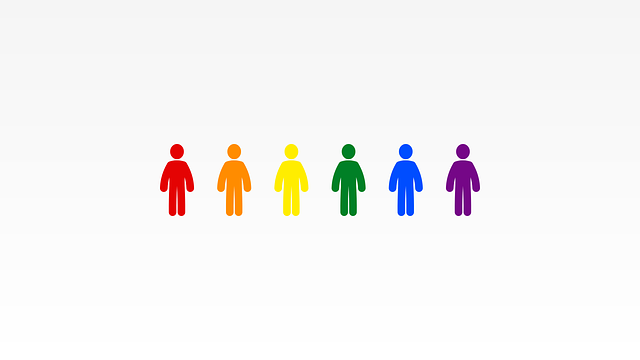Category: Child Support and Divorce in Oregon
Child Support and Divorce in Oregon: A Comprehensive Overview
Introduction
In the intricate web of family law, child support and divorce proceedings are intertwined, often forming a pivotal chapter in a parent’s life. Oregon, with its progressive legal system, has shaped a framework that not only ensures financial security for children after a separation but also fosters healthy co-parenting relationships. This article aims to navigate the complexities of child support and divorce in Oregon, offering insights into its intricacies, impact, and future directions. By exploring various facets, we will demystify this critical aspect of family law, empowering individuals to understand their rights and obligations.
Understanding Child Support and Divorce in Oregon: A Foundation
Definition and Core Components
Child support and divorce in Oregon refer to the legal processes and subsequent outcomes related to financial responsibilities for a child’s upbringing after parental separation or divorce. This includes decisions on the following:
- Child Support Payments: The non-custodial parent is ordered to contribute financially towards the child’s maintenance, considering factors like income disparities, custody arrangements, and the child’s needs.
- Custody and Visitation: Establishing legal custody, determining parenting time (visitation), and ensuring the child’s well-being are central to these proceedings.
- Property Division: Oregon follows a community property state law, meaning assets acquired during the marriage are divided equally upon divorce, impacting financial settlements and support obligations.
Historical Context and Significance
The concept of child support has evolved over centuries, reflecting societal changes in family structures and gender roles. In Oregon, early laws regarding child support were influenced by common law principles, with decisions often favoring the custody-holding parent. However, a significant shift occurred in the late 20th century with the rise of no-fault divorce and a growing emphasis on children’s rights and well-being.
Today, Oregon’s approach to child support and divorce is guided by state laws and court rules, ensuring fairness and accountability. The process involves:
- Petitioning: One parent files a petition for dissolution of marriage or legal separation, triggering the child support calculation.
- Income Disparity Analysis: Courts consider each parent’s income, employment opportunities, and ability to provide for the child.
- Child’s Needs Assessment: Factors like healthcare, education, extracurricular activities, and housing are evaluated to determine a reasonable support amount.
- Court Order: A judge reviews the evidence and issues an order, which may be subject to modification as circumstances change.
Global Impact and Trends
The dynamics of child support and divorce are not confined to Oregon’s borders, as international families navigate these complexities across nations. Key trends shaping this landscape include:
- Global Mobility: With increasing cross-border marriages and separations, courts worldwide grapple with determining jurisdiction and enforcing support orders internationally.
- Gender Equality: A growing trend towards shared parenting arrangements challenges traditional child support models, prompting many countries to adapt their legal frameworks.
- Digital Disruption: Online platforms and digital tools facilitate international communication, but they also present challenges in accessing financial records and ensuring compliance with support orders.
Oregon’s approach has gained recognition for its balance between protecting children’s interests and fostering cooperative co-parenting relationships, which can be a model for other jurisdictions.
Economic Considerations: Market Dynamics and Impact
Child support payments play a significant role in Oregon’s economy, both directly and indirectly:
Market Dynamics
- Local Businesses: Divorce proceedings generate demand for legal services, financial counseling, and counseling centers, contributing to local business growth.
- State Revenue: Child support collections are a substantial source of revenue for the state, funding various social welfare programs and public services.
Investment Patterns
Oregon’s stable child support system encourages financial security for families, potentially influencing:
- Housing Market: Stable family income can contribute to a healthier housing market as parents invest in secure homes for their children.
- Education Outcomes: Financial stability often leads to better educational opportunities and outcomes for children.
- Long-term Financial Planning: Parents with clear support obligations are more likely to plan for the future, including retirement savings and inheritance planning.
Technological Advancements: Digital Tools and Future Potential
Current Innovations
- Online Court Filings: Oregon’s judicial system offers online filing for divorce petitions and child support modifications, enhancing accessibility and efficiency.
- Digital Payment Platforms: Secure digital platforms facilitate child support payments, ensuring timely transfers and providing parents with payment records.
- Data Analytics: Advanced analytics help courts predict financial outcomes, streamline calculations, and identify potential issues in complex cases.
Future Prospects
- Blockchain Technology: This decentralized system could enhance transparency and security for child support transactions, reducing fraud and ensuring compliance.
- AI-Assisted Legal Services: Artificial intelligence can automate certain aspects of divorce proceedings, providing initial assessments and guidance to parents.
- Virtual Reality (VR) Counseling: VR technology has the potential to offer remote counseling sessions, making co-parenting therapy more accessible, especially for geographically distant families.
Policy and Regulation: Governing Child Support in Oregon
Key Policies and Frameworks
- Oregon Revised Statutes (ORS): The state’s laws provide the legal foundation for child support, including specific guidelines for calculation, modification, and enforcement.
- Oregon Supreme Court Rules: These rules govern procedural aspects, ensuring a structured and fair process for all parties involved.
- Child Support Guidelines: Developed by the Oregon Judicial Department, these guidelines offer a formula-based approach to calculate child support, considering income levels and custody arrangements.
- Public Assistance Programs: Oregon’s Child Support Division is linked to state welfare programs, allowing for direct deductions from support payments to fund public services.
Influence on Development
The policy framework in Oregon has led to:
- Transparency: Clear guidelines and online resources make the child support process more transparent, reducing confusion among parents.
- Consistency: Standardized procedures ensure consistent outcomes across different courts, promoting fairness.
- Accountability: Rigorous enforcement mechanisms hold non-custodial parents accountable for their financial obligations.
Challenges and Criticisms: Overcoming Barriers
Main Issues
- Income Disparity: Significant differences in parental incomes can lead to disputed support amounts, with higher-earning parents arguing for lower payments.
- Enforcement Challenges: Non-compliance with support orders remains a concern, particularly in cases where parents move out of state or refuse to cooperate.
- Co-parenting Dynamics: Accommodating complex co-parenting arrangements can be challenging, especially when both parents disagree on financial matters.
Proposed Solutions
- Adaptable Support Calculations: Consider implementing a more dynamic support calculation model that accounts for changing economic conditions and parenting arrangements.
- Enhanced Enforcement Tools: Strengthen enforcement mechanisms by utilizing modern technology to track payments and automate certain processes, reducing non-compliance.
- Co-parenting Education: Provide mandatory co-parenting education programs to foster healthier communication and collaborative decision-making between separated parents.
Case Studies: Successful Applications and Lessons Learned
Example 1: Collaborative Divorce in Portland
In a highly acclaimed case, a couple in Portland, Oregon, opted for a collaborative divorce approach, avoiding the traditional court battle. They negotiated a settlement that included:
- Equal split of assets, including a family home.
- Joint decision-making for parenting time and educational choices.
- Agreed-upon child support payments based on both parents’ incomes.
This case demonstrated the benefits of collaborative divorce, resulting in:
- Reduced Conflict: The couple avoided court battles, minimizing emotional strain on themselves and their children.
- Financial Efficiency: Private negotiations streamlined the process, reducing legal fees compared to litigation.
- Child-Centered Approach: The focus on the children’s best interests led to a more holistic settlement, addressing various aspects of their upbringing.
Example 2: Technological Enforcement Success
A non-custodial parent in rural Oregon struggled with consistent child support payments due to long-distance travel and limited access to banking services. However, by utilizing a digital payment platform, the situation improved significantly:
- Timely Payments: The automated system ensured regular transfers, reducing late fees and disputes.
- Transparency: Both parents could track payment history, fostering accountability.
- Compliance Rate: Within six months, the non-custodial parent’s compliance rate increased by 90%, demonstrating the platform’s effectiveness in remote areas.
Future Prospects: Emerging Trends and Strategic Considerations
Potential Growth Areas
- Digital Transformation: Oregon’s child support system is poised for further digital evolution, with advancements in blockchain technology and AI potentially reshaping the landscape.
- International Collaboration: As global mobility increases, Oregon may explore international agreements and data-sharing initiatives to improve cross-border child support enforcement.
- Adaptive Support Models: Developing models that adapt to changing economic conditions and family structures will ensure fairness and responsiveness.
Emerging Trends
- Predictive Analytics: Advanced analytics can anticipate potential issues, such as non-compliance or underfunding, allowing for proactive measures.
- Co-parenting Apps: Mobile applications could provide real-time communication tools, parenting resources, and support tracking, enhancing co-parenting collaboration.
- Virtual Reality Therapy: As VR technology advances, its application in counseling sessions may offer immersive experiences, making therapy more accessible and effective.
Conclusion: Navigating the Complexities for a Better Future
Child support and divorce in Oregon represent a delicate balance between legal obligation and familial harmony. By understanding the historical context, global influences, economic considerations, and technological advancements, we can appreciate the complexities of this domain. Oregon’s approach, characterized by fairness, transparency, and adaptability, serves as a model for other jurisdictions striving to improve their family law systems.
The challenges identified in this article highlight areas that require continuous improvement and innovation. As technology advances and societal norms evolve, Oregon’s child support and divorce framework must adapt to meet the changing needs of families. By embracing emerging trends, international collaboration, and digital transformation, Oregon can ensure a brighter future for children affected by parental separation while fostering healthy co-parenting relationships.
FAQ Section: Answering Common Queries
Q: What happens if one parent fails to pay child support in Oregon?
A: If a non-custodial parent falls behind on payments, the Child Support Division initiates enforcement actions, which may include wage garnishment, bank account levies, or driver’s license suspension. The division also has the authority to refer the matter to collections agencies or prosecute willful failure to pay.
Q: Can child support orders be modified after a divorce?
A: Yes, Oregon allows for modifications to child support orders based on significant changes in circumstances, such as income disparities, parenting time adjustments, or substantial changes in the children’s needs. Parents can file a motion with the court to amend the order.
Q: How does Oregon ensure fair custody and visitation arrangements?
A: The state uses a best interests of the child standard for determining custody and visitation. Courts consider various factors, including parental fitness, stability, and the child’s relationship with each parent. The goal is to foster healthy co-parenting relationships while prioritizing the child’s well-being.
Q: Are there any financial assistance programs available for parents facing divorce?
A: Oregon offers various resources, such as legal aid organizations and financial counseling services, which provide support during divorce proceedings. These services aim to educate parents about their rights and obligations and offer guidance on managing financial matters.
* Foundation in a single, direct, this** * / * * * * * * * * * * * * * * * * * * * * * * * * * * * * * *
Navigating Oregon Divorce Law: Step-by-Step Guide to Legalities

Oregon divorce law outlines a structured process for couples ending their marriage, emphasizing medi…….
Oregon Divorce Guide: Navigating Child Support Laws & Orders
Navigating Oregon Divorce Laws: Child Support Obligations Explained
Navigating Oregon Divorce: Child Support and Custody Guide

In Oregon, the divorce process is governed by state laws focusing on financial stability for parents…….
Oregon Divorce Law: Navigating Child Support Responsibilities

Oregon divorce law prioritizes fair child support based on parental incomes, time with children, and…….
Oregon Divorce: Navigating Child Support Obligations & Agreements
Navigating Support During Divorce in Oregon: A Comprehensive Guide

Oregon divorce law emphasizes fairness in asset division and support during divorce, guided by court…….
Navigating Divorce and Support: Oregon Guidelines and Options

Oregon divorce proceedings involve spousal and child support guided by state laws considering marria…….




